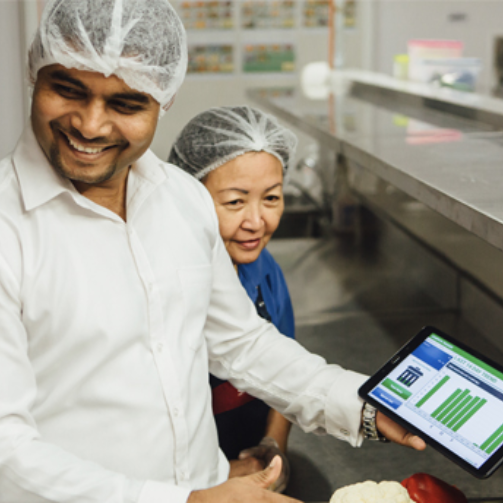Learn more about our pledge to corporate responsibility

.png?h=430&iar=0&w=1080)
A case study on how an energy-saving aircon net can reduce electricity consumption.
In Singapore, buildings spend on average 50% of their energy expenditure on cooling. The World Economic Forum estimates that emissions from air-conditioning could account for up to a 0.5 degree temperature increase by 2100.
There is the potential to improve the overall efficiency of the air-conditioning systems in Singapore. For example, Many airconditioned spaces in commercial and office buildings in Singapore have low temperature settings to compensate for inadequate air distribution in some areas.
The pilot ran from January 2024 to July 2024, where the baseline energy consumption was established between January and March 2024, and the energy consumption trend as well as the Cooling Degree Day Factor (kWh required to cool temperature by one degree Celsius) were tracked from April to July 2024.
The interior of the air conditioner, and its plastic panel (insulator), are constantly generating positive static electricity due to friction with the airflow produced by the fan rotation.
CONTINEWM® Nets, which is constantly negatively charged, neutralizes the positive charges in the airflow due to the electrostatic friction, consequently neutralizing the repulsive force between the two means (fins of the heat exchanger & air).
By optimizing the contact area between the air and the fins of the heat exchanger, the result is an increased efficiency of the AC; the stop-cycles of the compressor will be longer in time and more regular, with a consequent energy saving effect.
The infrared emission produced by CONTINEWM® PLUS Nets brakes down micro aggregation of water molecules (humidity) into much finer clusters and individual water molecules. This effect allows a more evenly distributed temperature across the room and highly improved homogeneity, while reducing the overall energy consumption.
Someone once told me, "Today's expensive is tomorrow's cheap." The same principle applies in many things we do today. If we do not start now, it will get harder in the future. With good ROI and easy installation, CONTINEWM® Nets enable us to save energy / reduce carbon emission and enjoy better IAQ. The sooner we start, the longer we enjoy the benefits and the faster we reap the rewards.
Sodexo is the first food services company to commit to reaching Net Zero by 2040 globally, thus asserting its leadership in the sector when it comes to fighting climate change. The Group aims to accelerate its journey towards becoming the leader in sustainable food and valued experiences. Sodexo is accelerating a journey started in 2017 with the commitment to achieve a -34% reduction in carbon emissions by 2025, an objective approved by the Science-Based Targets initiative (SBTi).